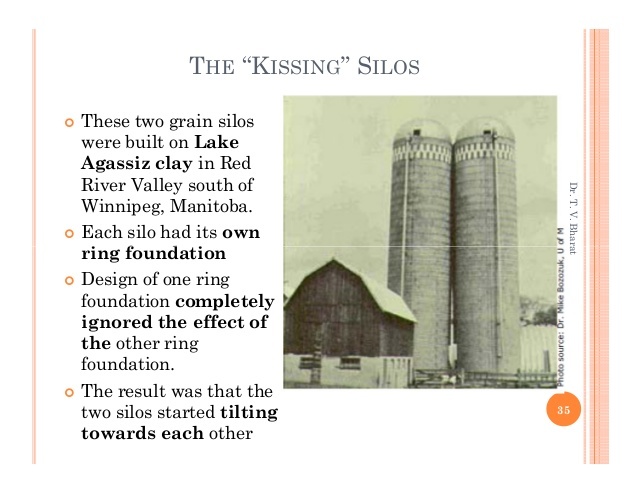Silos - in Canada have had a share of problems. Transcona Grain Elevator comes to mind among others (see Tschbotarioff, 1951 for another). I do not think that 80 ft is too shallow by any means. In Sarnia, boreholes in the clays at the various refineries typically went down about 100 ft. In Toronto, I always thought that a 100 ft for a borehole was pretty deep; until I came to Asia and have seen boreholes put down to over 50 m and sometimes 100 m. Oldestguy is right in that normally you would investigate to where the vertical stress depth is 10%. For a square of round footing this would be 2B where B is the foundation width; for strip footings it would be more like 4B. You have indicated that there will be two tanks - will they be on the same or different foundations? if the same, you would be having a rectangular foundation and 2B may not be good enough; you may need to go a bit deeper.
Now that is out of the way - you should always be prepared to adjust your programme and hole depths. Obviously, if you run into bedrock at 50 ft, you would core 10 ft (to prove bedrock and not a boulder - and do at least 10 ft. A geo firm in Toronto starting with a "Gol. . ." did 5 ft one time and it was ledge rock and not bedrock - oops. Similarly, you may find a reason to go deeper. Now, having said that your programme should be flexible enough to adjust borehole depths, you should also be wanting to adjust your sampling intervals and sample retrievals. When I was in India, we had 6 m of very soft clay (Su < 20 kPa); the typical borehole would be top take a sample at 1.5 m (SPT),3 m (thin walled tube), 4.5 m (SPT) and at 6 m (thin-walled tube). I thought this was ridiculous given that we would only have 3 samples in the strata that was the most important. I adjusted the investigation to take a thin walled tube at 1 m intervals (100 mm diameter tube) and then, do a split spoon down the thin-walled tube hole. This way, while, yes, the SPT might be argued to yield "bad" results, I did end up with 6 thin-walled tubes and 6 blow counts with a chance to look immediately as per any laminations within the soil on opening up the split spoon.
Oh, and be careful of desiccated crusts.

